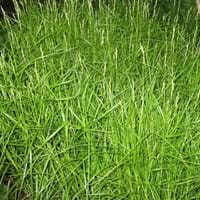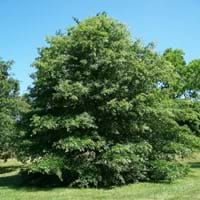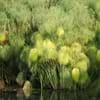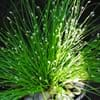Life Span
Perennial
Biennial
Origin
North-Central United States, Canada
United States, North-Central United States, Canada
Types
Not Available
The White Oaks, Chestnut Oak, Bur Oak
Habitat
Moist Soils
Humid climates
USDA Hardiness Zone
3-8
4-7
Sunset Zone
4, 5, 6, 7, 8, 9, 14, 15, 16, 17, 18, 19, 20, 21, 22, 23, 24
Not Available
Habit
Clump-Forming
Spreading
Flower Color
Gold, Brown
Red, Light Green
Flower Color Modifier
Bicolor
Bicolor
Fruit Color
Non Fruiting Plant
Chocolate
Leaf Color in Spring
White, Green
Pink, Sienna
Leaf Color in Summer
White, Green
Dark Green
Leaf Color in Fall
Yellow
Red, Purple, Burgundy, Dark Red
Leaf Color in Winter
Not Available
Not Available
Leaf Shape
Acicular
Y-shaped
Plant Season
Spring, Summer, Fall
Spring, Summer, Fall
Sunlight
Full Sun, Partial Sun, Partial shade
Full Sun
Type of Soil
Loam
Clay, Loamy, Moist, Sandy, Well drained
The pH of Soil
Acidic, Neutral
Acidic
Soil Drainage
Average
Well drained
Bloom Time
Late Spring, Early Summer, Summer
Spring, Late Spring
Tolerances
Drought
Drought
Where to Plant?
Ground
Ground
How to Plant?
Bulbs
Seedlings
Plant Maintenance
Medium
Medium
Watering Requirements
Average Water Needs
Average Water Needs, Needs watering once a week, occasional watering once established, Requires watering in the growing season, Water daily during growing season, Water more in summer
In Summer
Lots of watering
Lots of watering
In Spring
Moderate
Moderate
In Winter
Average Water
Average Water
Soil pH
Acidic, Neutral
Acidic, Neutral
Soil Type
Loam
Clay, Loam, Sand
Soil Drainage Capacity
Average
Well drained
Sun Exposure
Full Sun, Partial Sun, Partial shade
Full Sun
Pruning
Remove damaged leaves, Remove dead branches, Remove dead leaves
Prune for shortening long shoots, Prune if you want to improve plant shape, Prune when plant is dormant, Remove damaged leaves, Remove dead branches, Remove dead leaves, Remove short branches
Fertilizers
All-Purpose Liquid Fertilizer
All-Purpose Liquid Fertilizer
Pests and Diseases
Red blotch
Red blotch
Plant Tolerance
Drought
Drought
Flower Petal Number
Single
Not Available
Foliage Texture
Fine
Medium
Foliage Sheen
Matte
Glossy
Attracts
Birds
Birds, Hummingbirds, Squirrels, Woodpeckers
Allergy
Not Available
Not Available
Aesthetic Uses
Not Used For Aesthetic Purpose
Showy Purposes
Beauty Benefits
Not Available
Not Available
Edible Uses
Insignificant
No
Environmental Uses
Air purification
Air purification, Shadow Tree, Shelter for wildlife
Medicinal Uses
Not Available
Not Available
Part of Plant Used
Bulbs
Tree trunks
Other Uses
Not Available
Air freshner, Grown for shade, Used as firewood, Used in Furniture, Used in paper industry, Wood is used for making furniture, Wood is used fore making tools, Wood log is used in making fences
Used As Indoor Plant
No
No
Used As Outdoor Plant
Yes
Yes
Garden Design
Bog Garden, Groundcover, Mixed Border, Water Gardens
Shade Trees
Botanical Name
CAREX muskingumensis 'Ice Fountains'
QUERCUS ellipsoidalis
Common Name
Palm Sedge
Northern Pin Oak
In Hindi
Palm Sedge
Pin Oak
In German
Palm Sedge
Pin-Eichen
In French
Palm Sedge
Pin Oak
In Spanish
Palm Sedge
pin Oak
In Greek
Palm Sedge
pin Oak
In Portuguese
Palm Sedge
Pin Oak
In Polish
Palm Sedge
pin Oak
In Latin
Palm Sedge
Quercus
Phylum
Magnoliophyta
Not Available
Class
Lillosida
Magnoliopsida
Family
Cyperaceae
Fagaceae
Clade
Not Available
Angiosperms, Eudicots, Rosids
Tribe
Not Available
Not Available
Subfamily
Not Available
Not Available
Number of Species
Not Available
Difference Between Palm Sedge and Pin Oak
If you are confused whether Palm Sedge or Pin Oak are same, here are some features about those plants to help you choose better. Many people think that these two plants have the same characteristics, but one can see Palm Sedge and Pin Oak Information and learn more about it. Fertilizers required for proper growth of Palm Sedge are All-Purpose Liquid Fertilizer, whereas for Pin Oak fertilizers required are All-Purpose Liquid Fertilizer. Hence, one should know the basic difference between Palm Sedge and Pin Oak if you are planning to have them in your garden to enhance its beauty.
<
Flowering PlantsImportance of Palm Sedge and Pin Oak
Want to have the most appropriate plant for your garden? You might want to know the importance of Palm Sedge and Pin Oak. Basically, these two plants vary in many aspects. Compare Palm Sedge and Pin Oak as they differ in many characteristics such as their life, care, benefits, facts, etc. Every gardener must at least have the slightest clue about the plants he wants to plant in his garden. Compare their benefits, which differ in many ways like facts and uses. The medicinal use of Palm Sedge is Not Available whereas of Pin Oak is Not Available. Palm Sedge has beauty benefits as follows: Not Available while Pin Oak has beauty benefits as follows: Not Available.
Compare Facts of Palm Sedge vs Pin Oak
How to choose the best garden plant for your garden depending upon its facts? Here garden plant comparison will help you to solve this query. Compare the facts of Palm Sedge vs Pin Oak and know which one to choose. As garden plants have benefits and other uses, allergy is also a major drawback of plants for some people. Allergic reactions of Palm Sedge are Not Available whereas of Pin Oak have Not Available respectively. Having a fruit bearing plant in your garden can be a plus point of your garden. Palm Sedge has no showy fruits and Pin Oak has showy fruits. Also Palm Sedge is not flowering and Pin Oak is not flowering . You can compare Palm Sedge and Pin Oak facts and facts of other plants too.





